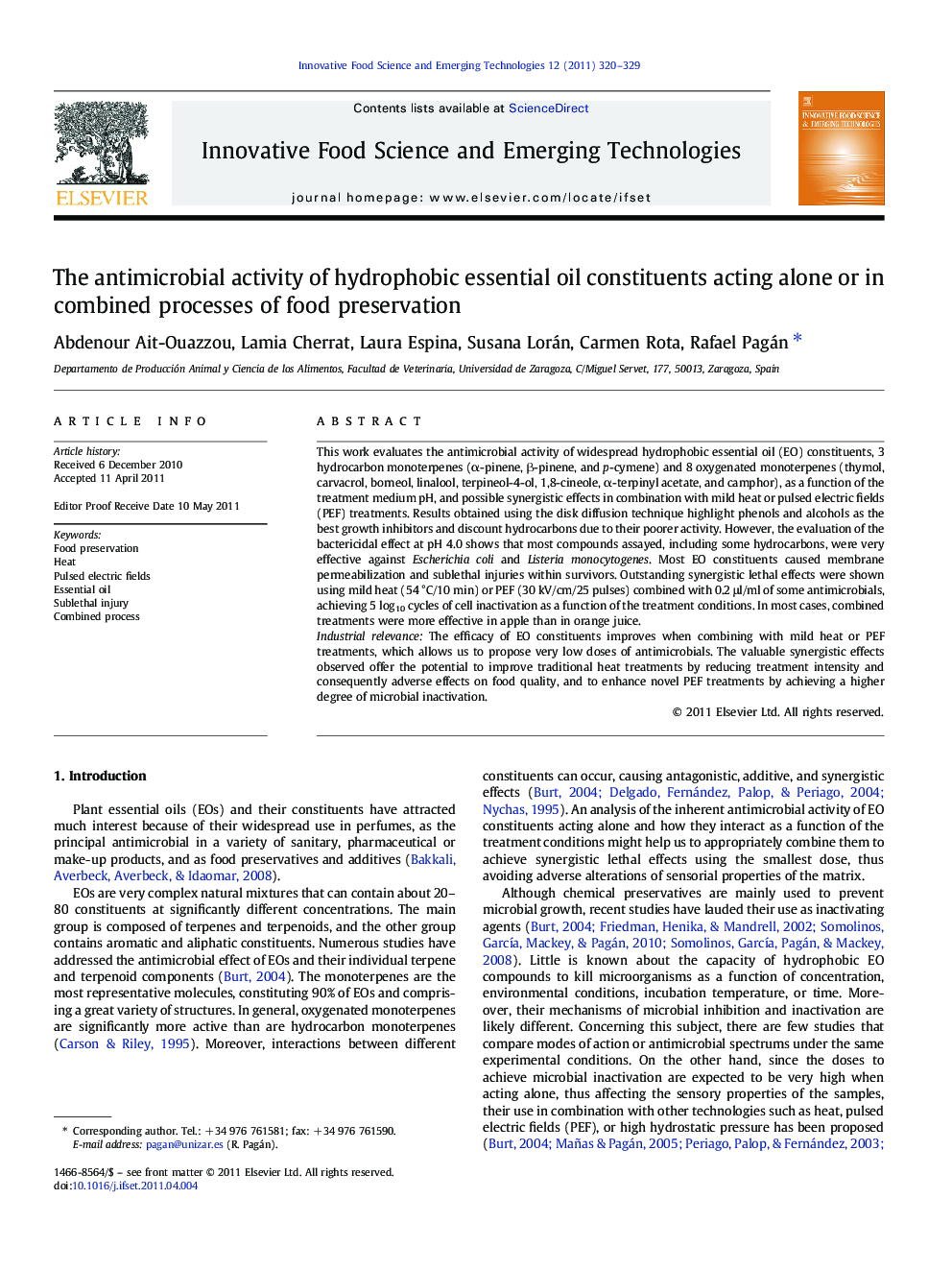| کد مقاله | کد نشریه | سال انتشار | مقاله انگلیسی | نسخه تمام متن |
|---|---|---|---|---|
| 2086841 | 1080619 | 2011 | 10 صفحه PDF | دانلود رایگان |

This work evaluates the antimicrobial activity of widespread hydrophobic essential oil (EO) constituents, 3 hydrocarbon monoterpenes (α-pinene, β-pinene, and p-cymene) and 8 oxygenated monoterpenes (thymol, carvacrol, borneol, linalool, terpineol-4-ol, 1,8-cineole, α-terpinyl acetate, and camphor), as a function of the treatment medium pH, and possible synergistic effects in combination with mild heat or pulsed electric fields (PEF) treatments. Results obtained using the disk diffusion technique highlight phenols and alcohols as the best growth inhibitors and discount hydrocarbons due to their poorer activity. However, the evaluation of the bactericidal effect at pH 4.0 shows that most compounds assayed, including some hydrocarbons, were very effective against Escherichia coli and Listeria monocytogenes. Most EO constituents caused membrane permeabilization and sublethal injuries within survivors. Outstanding synergistic lethal effects were shown using mild heat (54 °C/10 min) or PEF (30 kV/cm/25 pulses) combined with 0.2 μl/ml of some antimicrobials, achieving 5 log10 cycles of cell inactivation as a function of the treatment conditions. In most cases, combined treatments were more effective in apple than in orange juice.Industrial relevanceThe efficacy of EO constituents improves when combining with mild heat or PEF treatments, which allows us to propose very low doses of antimicrobials. The valuable synergistic effects observed offer the potential to improve traditional heat treatments by reducing treatment intensity and consequently adverse effects on food quality, and to enhance novel PEF treatments by achieving a higher degree of microbial inactivation.
Research highlights
► The study compares the antimicrobial activity of 11 essential oil (EO) constituents.
► Most EO constituents caused cell membrane permeabilization and sublethal injuries.
► The antimicrobial activity of EO constituents improved in combined processes.
► Valuable synergistic effects were observed between heat or PEF and EO constituents.
► EO constituents offer the potential to improve both heat and PEF treatments.
Journal: Innovative Food Science & Emerging Technologies - Volume 12, Issue 3, July 2011, Pages 320–329